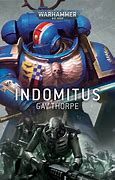Day of Ascension by Adrian Tchaikovsky, a review.
This was my first time reading anything by Tchaikovsky. Well, Adrian Tchaikovsky. Thankfully, it proved to be a positive experience. This book is written differently than other 40k books I have read recently. Tchaikovsky's style is entirely his own. It took a little getting used to, but shortly the story got its hooks into me, and I couldn't put it down. The story revolves around the attempted coup by a genestealer cult on the forge world of Morod. It is a failed coup that sets off an exciting series of events that takes the reader deeper into the workings of the Mechanicus and the cult that has lived in this world for generations. The story centers around Genetor Gammat Triskellian but other characters play into the overall narrative.
The story opens up with Triskellian awaiting the attention of Fabricator General Burzulem, the lord of Morod. As the day of Ascension is approaching, Triskellian has come to court to make a request from his overseer. A task he finds odorous, made worse by Burzulem's demeaning manner. There is an intense dislike of the other between these two characters. Burzulum views Triskellian's research as pointless, and the other thinks little of his one-time rival's abilities. Unfortunately, these events are immediately overshadowed as an assassination attempt is made against the Fabricator general. It is only foiled by Triskillian's poor placement and subsequent loss of his arm, as the initial round misses its intended target. The attempt is foiled swiftly, though there are some casualties, and we see that the attacker possesses a form twisted beyond the human norm. There are signs that this person is no longer entirely human. They are taken away to be used as entertainment amid the festivities on the incoming Ascension day. The Festivities that Triskellian is now responsible for.
We switch then to those that live among the workers of Morod, to the people that work short, brutal lives to provide the resources necessary for this planet to prosper. We are introduced to Davien, a runner that works to relay messages. A position that gives her access to restricted sites, something that her people use to their advantage. Davien is part of the sub-culture that has remained hidden from their overseers for many generations. She has heard the news that their allotted hero had failed, that their prophesied uprising had stumbled at the first step. Sakiri had been unable to kill Burzulem, leaving their plans in tatters. Davien's only remaining thought is to rush back to her brother, afraid Niem might be caught up in the coming conscription pool. Barely avoiding the Skitarii, we discover that Niem is mutating and that he is being helped along with a doctor that works for this cult. A cult that we learn has been here for more generations than most, a cult that believes that they are worshipping the true Emperor. Their belief is that angels will come and raise them up, remake them into something divine if they can throw off the shackles of their Mechanicus oppressors. As someone familiar with genestealer cults, this indoctrination hides the horror of what they are from those within the cult. It is one of the many tools the cults utilize to realize their objective. And that objective is to signal to the Tyranid Hive mind to summon one of their fleets that drift through the vastness of space looking for more bio-mass to consume. The story follows Davien as she attempts to get their initial plan of track, even as Triskellian seeks to utilize their unique physiology to his own ends. This plan forces them to work together but dooms both in the long run.
What appealed to me about this book is that it looked at the inner workings of the Mechanicus as much as it did the cult. The politicking, and maneuvering, the magos' used to further their own ends highlighted that they were just as corrupted in their own fashion. This is not a story about heroes and villains, though there is some subjectivity to that view. What it does well is showing how corruption can go unnoticed, and threats can be dismissed by those that have become lazy and apathetic. What is worse is that some will risk the safety and security of others to see themselves reach their goals. This story centers on the inner workings of civilization, though it does have some action. It has a great insight into the minds of the Magos' of this planet and how things work far from the warzones of the greater 40k universe.
It took me longer than I wanted to get this review done. Mostly I found myself distracted by many things I have been trying to get off the ground. Thankfully, the story stayed fresh in my mind. Though I did not want to go into too much detail, it could ruin much of the unexpected ending. This book is a solid 7 out of 10. I would have given it more, but I struggled to get into it. It might have been the type of story that was not what I had expected or the writing style. However, I did get into it and found myself enjoying it. It is more for the reader looking to discover more about the Mechanicus or Genestealer cults. Any fan of Warhammer 40k will enjoy it, alongside those of grimdark science fiction.




